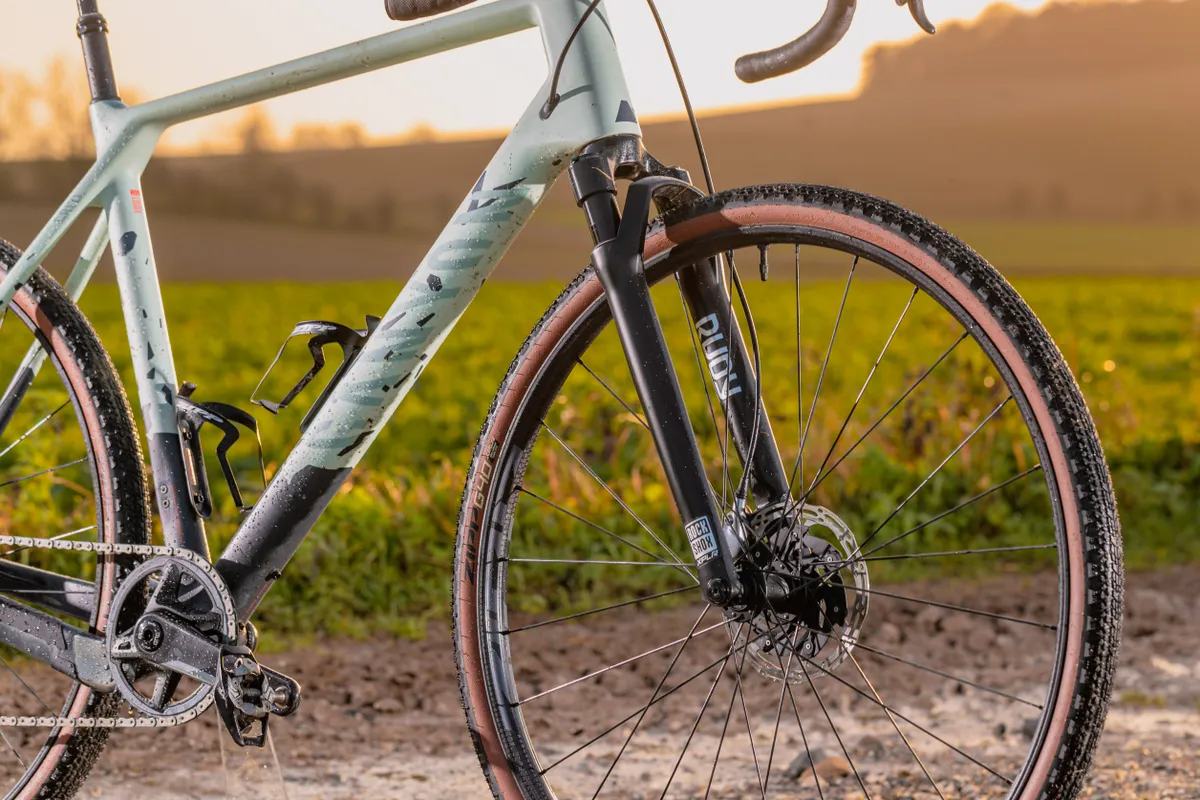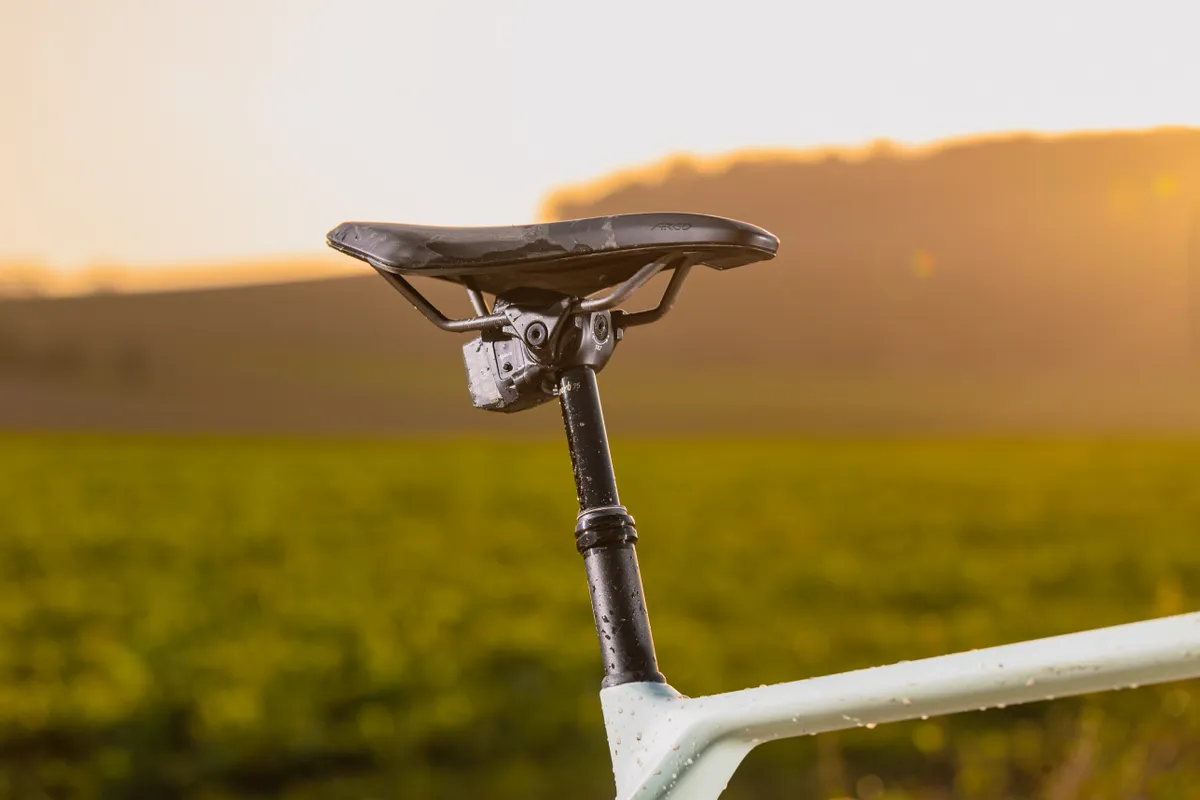The SRAM eTap AXS XPLR drivetrain components are keystones of the brand’s new XPLR suite of gravel products.
They bring the simplicity of wireless shifting and SRAM’s smart eTap shift logic, and pair it with 1x gear ratios defined around the demands of gravel riding.
When the XPLR range launched in August 2021, it comprised of gravel-specific drivetrain components across SRAM’s three primary road groupset tiers – Rival, Force and Red – and also brought with it the RockShox Rudy Ultimate XPLR gravel fork (you can read our RockShox Rudy review), RockShox Reverb AXS dropper post and Zipp 101 wheelset.
As far as the XPLR drivetrain components are concerned, the basic functionality exactly mirrors the road-going Red eTap AXS groupset (you can read my SRAM Red eTap AXS groupset review). In fact, the shifters themselves and the brakes are entirely the same.
The differences, however, are in the cassette ratio, cranksets and rear-derailleur design.
Exploring the details
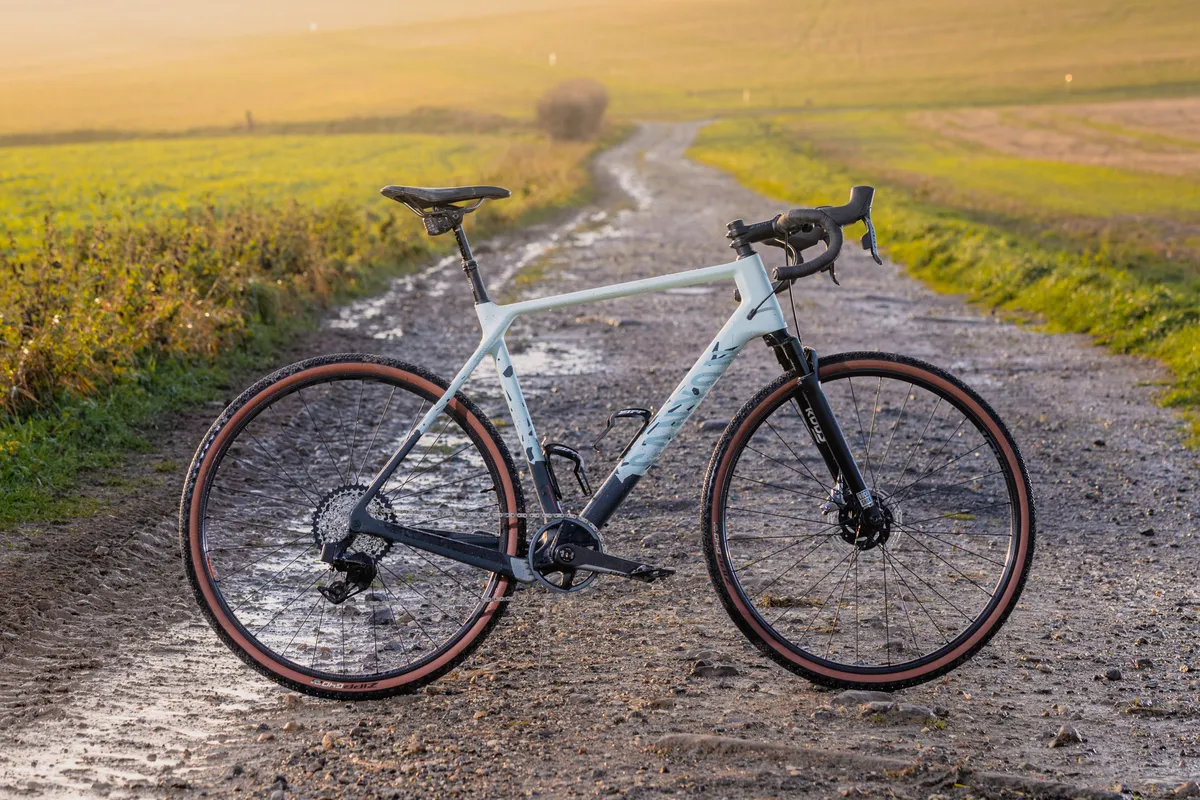
What’s new with XPLR, then?
Where the standard rear derailleurs in SRAM’s road groupset range have a maximum sprocket capacity of 33 teeth (with Wide/Max variants of the road derailleur that can take up to 36 teeth), the XPLR rear derailleur uses a much longer cage.
With that in mind, it can accommodate sprockets up to 44-teeth in size, with a new 10-44t XPLR cassette arriving as a result.
The new XPLR derailleur design is for use with single-chainring, 1x cranksets only, with SRAM offering 36-46-tooth chainring sizes for the new direct-mount design.
While SRAM is offering Red, Force and Rival variants of the XPLR rear derailleurs and cranksets, the cassette is available in two options: XG-1271 and XG-1251, nominally corresponding to Force and Rival levels respectively.
There’s the upscale XG-1271 option tested here, which uses a lighter alloy at the top end and weighs a claimed 373g, while the XG-1251 comes in at a claimed 412g and is all-steel.
Finding the gearing sweetspot
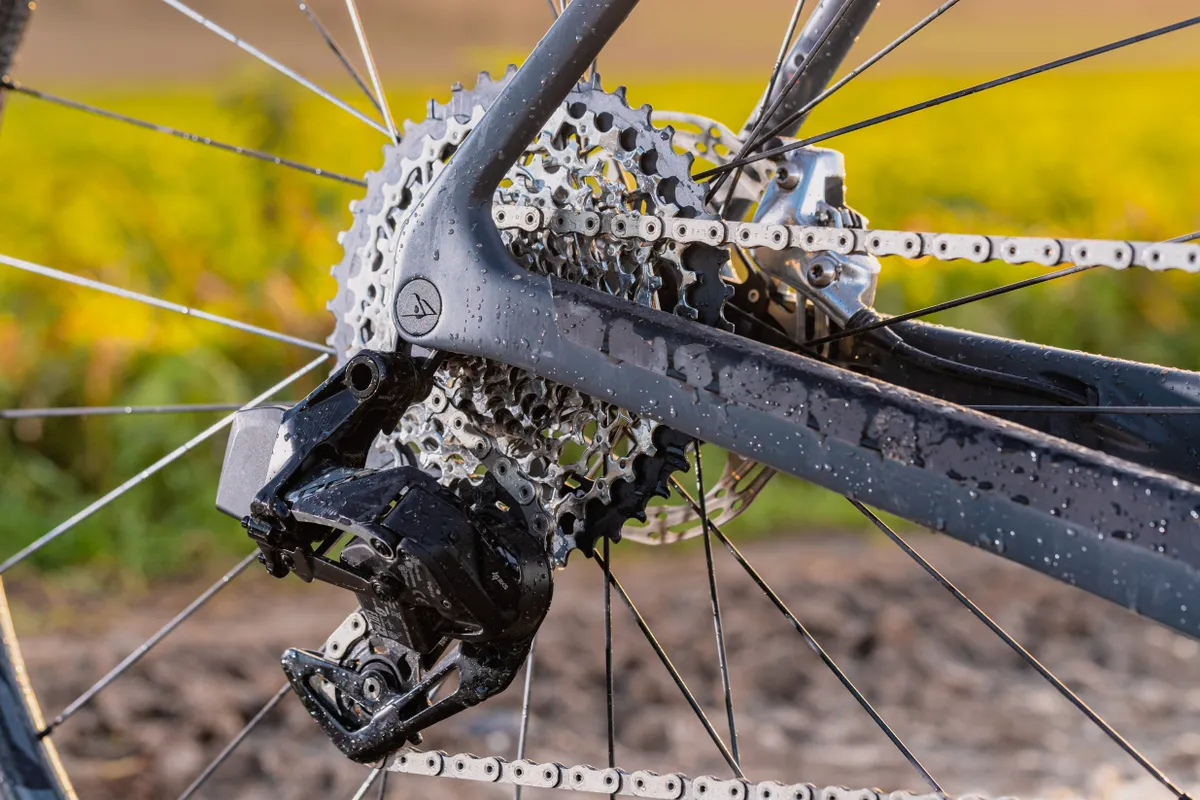
At first, XPLR’s gearing capacity seemed, to me, like putting a niche between two niches.
Originally, eTap AXS was conceived as a compatible ecosystem across different riding disciplines, including both road riding and mountain biking.
As a result, the ‘mullet’ setup – which uses eTap AXS road-going shifters with an eTap AXS MTB drivetrain – was acknowledged as a viable solution for gravel riders in search of low off-road gearing, so I wondered where the need for XPLR, which sits somewhere in the middle, came in.
However, the XPLR drivetrain brings complete compatibility with road eTap AXS, allowing use of the flat-topped road chain and a wide range of road chainrings, rather than the more limited range available in the Eagle mountain bike groupset line-up.
On paper, the lighter chain and cassette look to be the better option. On the bike, however, we’re talking a few grams between the two, and both gravel and mountain bike iterations of eTap AXS shift nigh-on flawlessly.
Options, options
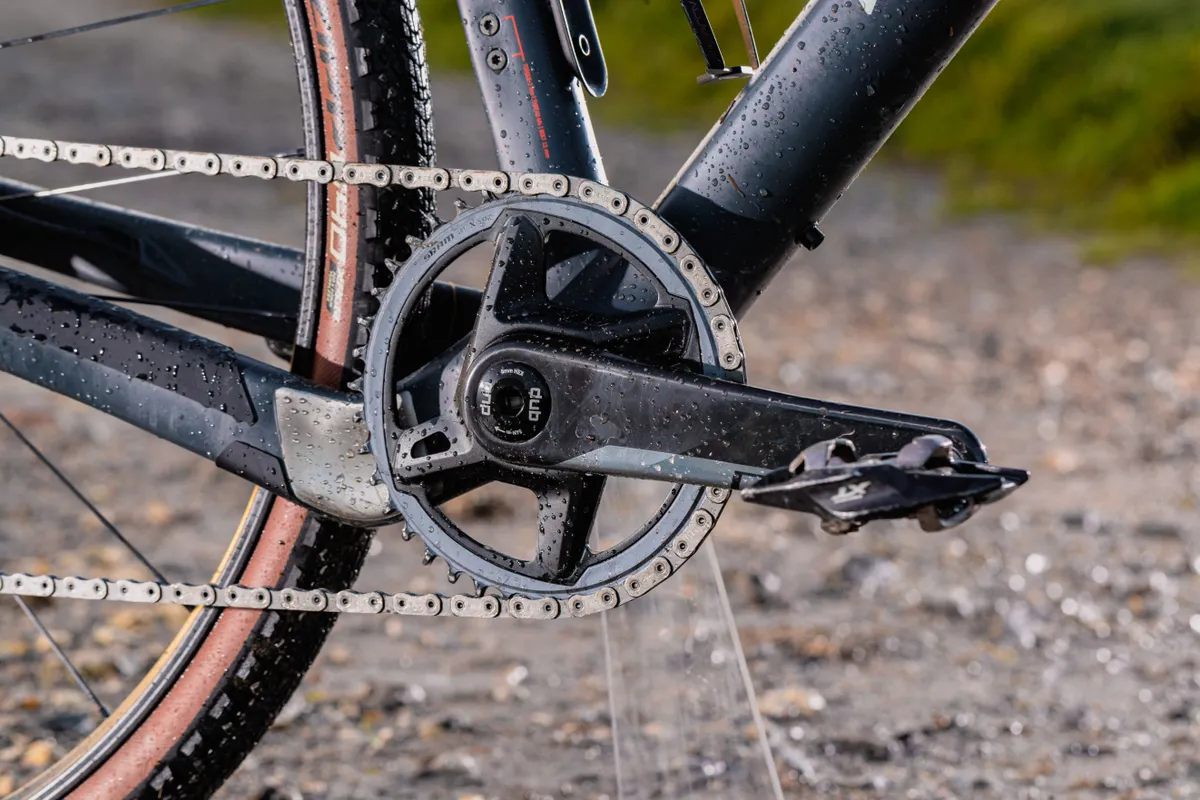
My XPLR setup combines a 40-tooth chainring with the 10-44t cassette. That gives the hardest gear of 111.18 inches and a lightest gear of 25.29 inches.
With Eagle’s 10-52t cassette and largest 38-tooth chainring you can only get a 105-inch hardest gear (with the same wheel and tyre combination), though at 20 inches at the other end, it can go lighter.
You can also get a wider range of gearing with SRAM’s Wide/Max components by pairing, for example, the 43/30t SRAM Force Wide crankset with a 10-36t cassette and a Wide/Max rear derailleur (available at either Red or Force level).
As an aside, if you currently own a SRAM Wide/Max rear derailleur, which has a maximum cassette capacity of 36-teeth, it’s important to note it’s not compatible with the 10-44t XPLR cassette.
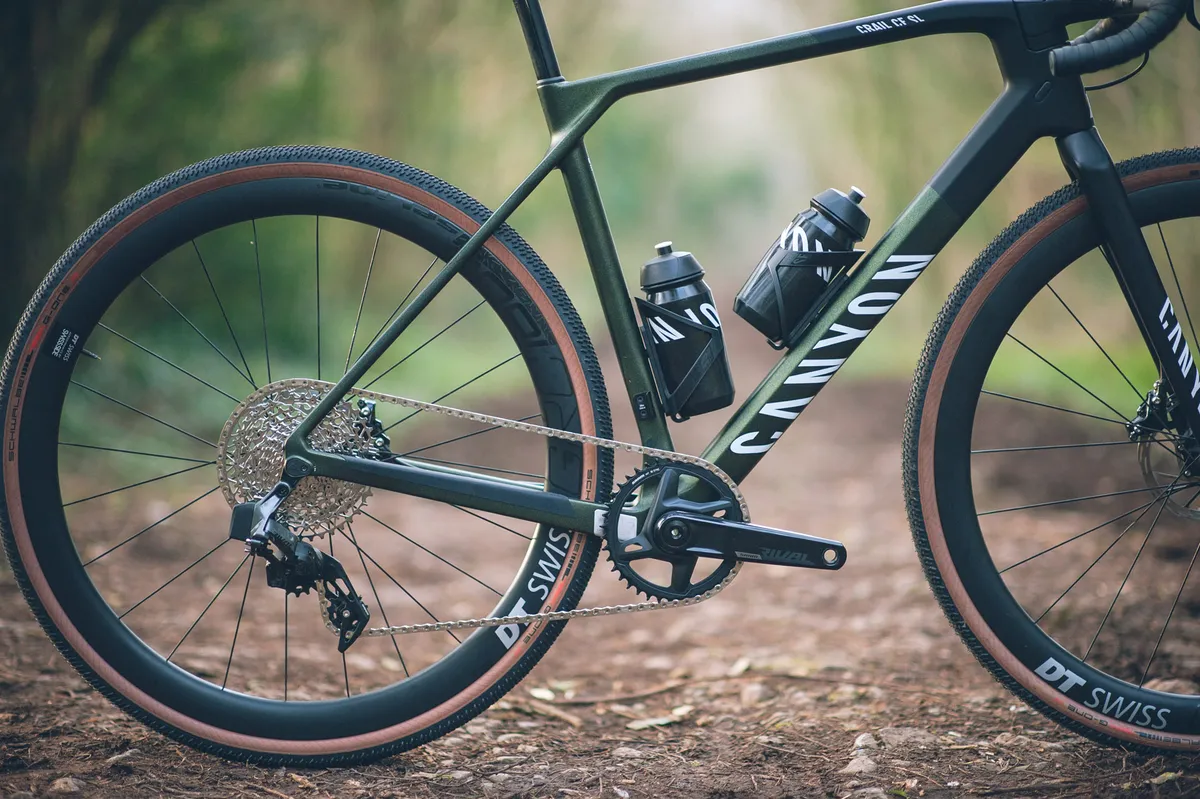
The XPLR derailleurs have longer upper ‘knuckles’. These knuckles are even longer than those seen on SRAM's Max/Wide rear derailleurs.
The derailleurs are also 1x-specific, featuring cages that have offset upper pulley wheels.
These two features help to maintain a proper chain gap across the entire cassette range.
All of these components are specific to SRAM’s latest 12-speed drivetrains, too. If you’re running an 11-speed 1x drivetrain, SRAM offers a maximum 10-42t cassette, with chainring options of 36-46t.
It’s a close-run thing but XPLR has the option for lighter gears with its 44-tooth cassette sprocket and the move to 12-speed to add an extra gear in along the way, which I’ll come on to.
As for other 1x options on the market, Shimano GRX offers 40t and 42t options for its chainsets and a max of 11-42t for cassettes – all 11-speed, remember. The 1x-only, 13-speed Campagnolo Ekar groupset has a maximum cassette of 10-44t with chainrings between 38t and 44t.
And the result?
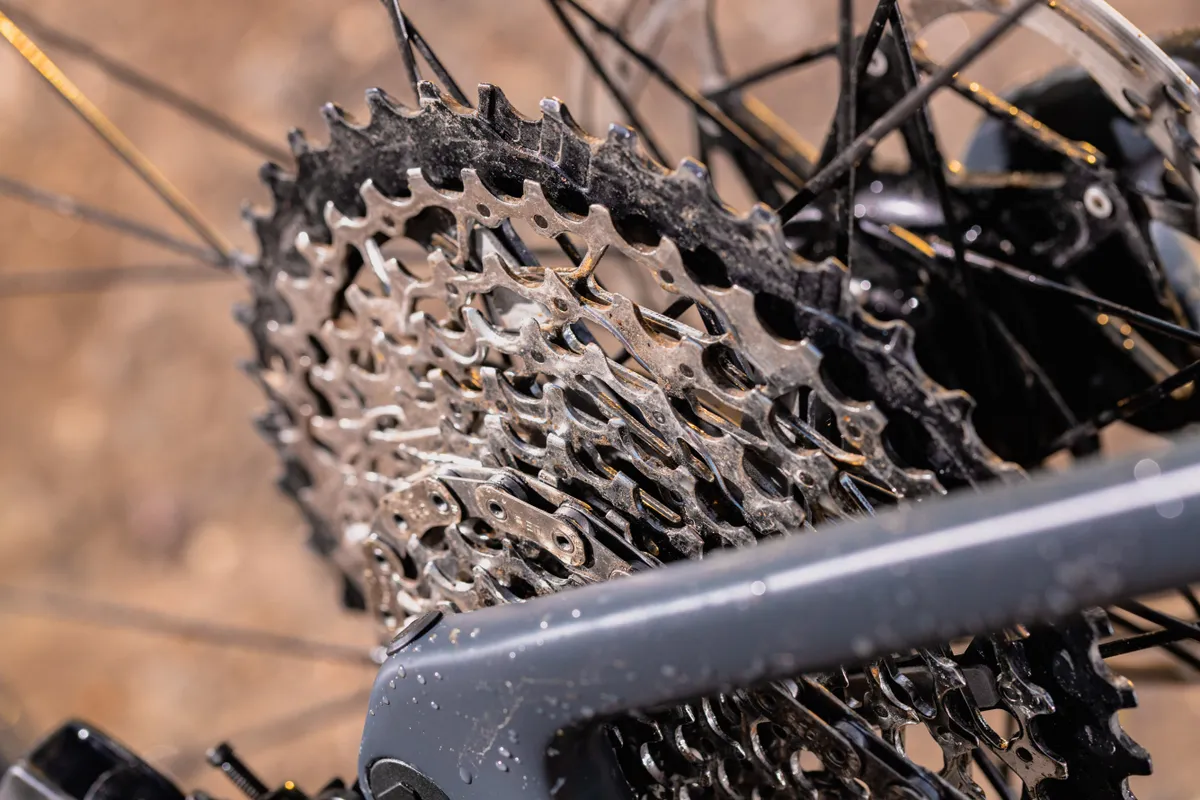
With the 40t chainring and 10-44t cassette tested here, it’s a very well thought-out combination.
The 40/10 gearing combination provides a big enough gear for most descents and to keep pace with road-bike-riding friends, while the 40/44 meant the only thing limiting my ability to climb the steepest gradients was traction (and my legs).
Where SRAM has been smart, much like on its road 12-speed systems, is in the gear progression, and this is where XPLR trumps a so-called mullet drivetrain in most everyday gravel riding scenarios.
Having a spread of 10/11/13/15/17/19/21/24/28/32/38/44 across the XPLR cassette means the brand has managed to keep the gears in which most riders spend most of their time closely spaced, with just one or two teeth between them.
That makes for smoother gear progression both up and down the block, with the bigger jumps at the top of the cassette, which is fine by me.
I tend to reserve those gears for the business end of steep and/or technical climbs where I’m not overly concerned with a finessed gear progression, and the opportunity to reach for a significantly easier gear with just one shift is welcome. In these scenarios, my mind is usually set on staying planted and pedalling.
If you do want additional range, then a road/MTB mullet configuration is still an option, but with the 10-44t cassette that sits at the heart of XPLR, most riders will be covered. You get smooth progression through a wide gearing range, with the simplicity of a 1x setup.
Long-term consistency
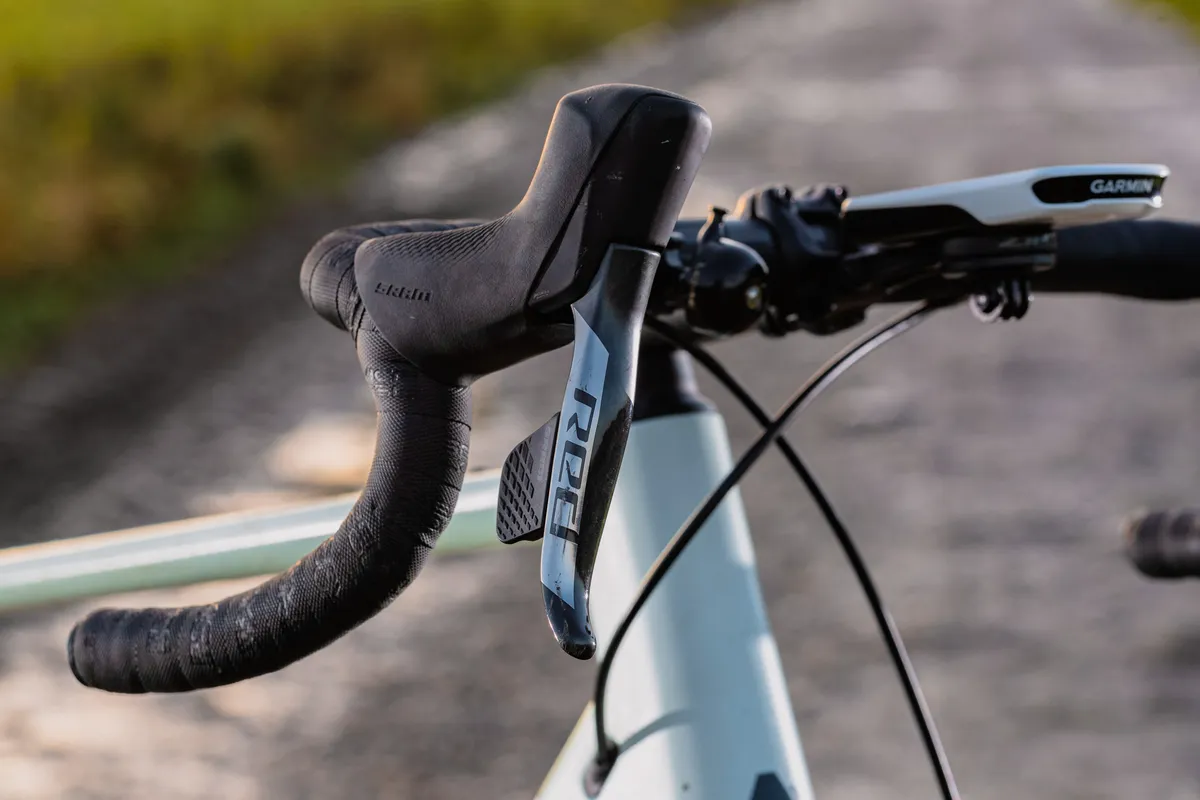
At the time of writing, I’ve logged just over 1,200 miles / 1,932km on the drivetrain, in all weathers, and it's barely put a foot wrong.
Shifts are smooth and accurate every time, as we’ve come to expect from SRAM’s electronic groupsets, and the battery has required only a couple of recharges in that period.
The only functional issue to report is one of the donut-shaped dust caps on the chainset’s driveside working its way loose and getting lost.
A replacement was provided, which I secured with a dab of Loctite. It has been fine since.
The Orbit fluid damper (a clutch-like mechanism) borrowed from Red’s road-going AXS is expected to do double the duty when it comes to chain control off-road, but it has proven more than capable enough for the job.
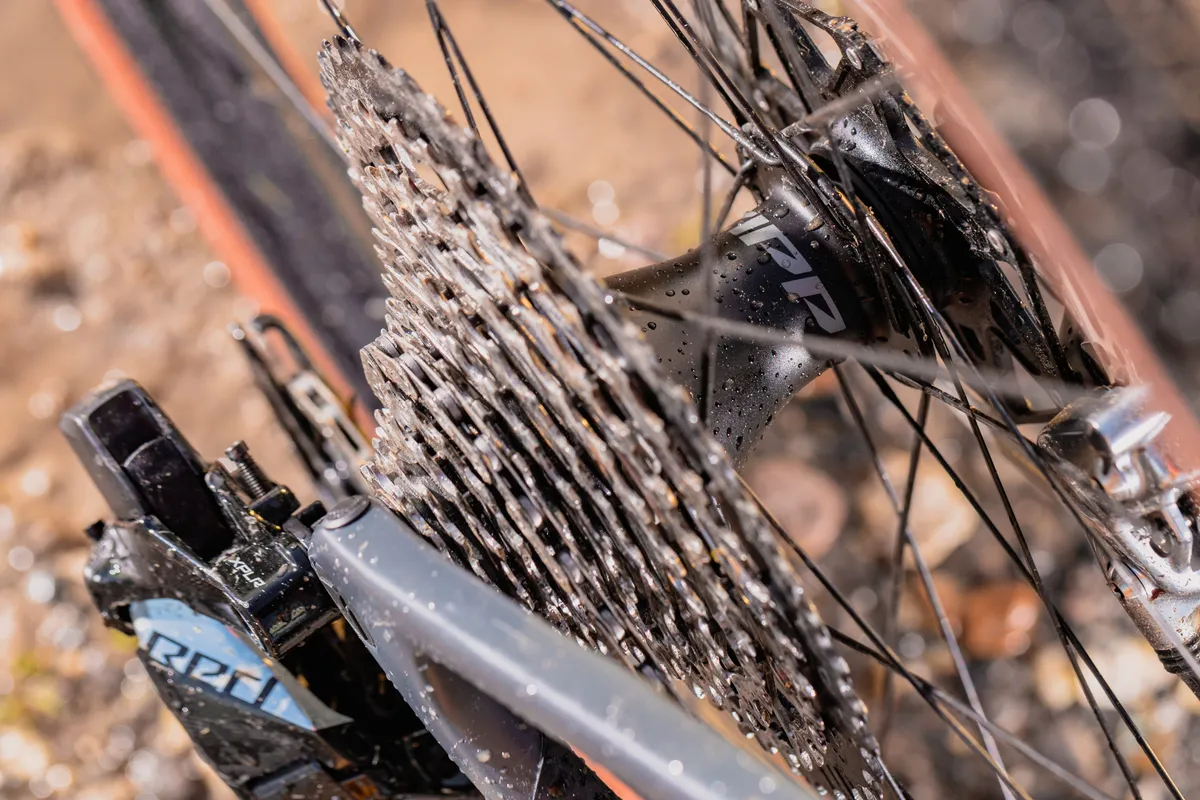
I found it held chain tension perfectly, while the narrow/wide tooth patterning on the chainring helps to keep the chain turning smoothly and your hands oil-free as well.
The lever and brake feel are the same as the Red AXS setup I’ve tested previously, which is no great surprise given they are carried over from the road groupset.
However, for off-road use, I did find it better to adjust the brake levers’ contact point out to its maximum setting. With a 5mm hex bolt underneath the rubber cover on top of each hood, it is easy to access and adjust.
The levers also have a clever reach-adjust function that can be fine-tuned with a 2.5mm hex bolt below the shift lever, but having big hands I left this alone on its fully extended setting.
Braking, as it is on the road, is excellent. The large 160mm rotors provide plenty of feel through the lever travel. In filthy conditions, any brake/rotor scraping was kept to a minimum.
Getting connected
Beyond the shift logic and wireless setup, the major way in which SRAM’s eTap groupsets set themselves apart from their main rival, Shimano Di2 (at least in its guise without the optional Bluetooth aerial sub-component) is its integration with the dedicated SRAM AXS app.
At its simplest, you can use the app to keep track of battery levels more accurately than what’s displayed on a GPS head unit (when it is synced with the drivetrain).
However, there is much more to be had from this clever bit of software, for tech-savvy riders who are so inclined.
Firstly, you can assign the buttons on your shifters to operate how you want them (on 2x setups you can run semi-automatic or fully automatic front shifts).
The app also deserves praise for the wide range of metrics it records. It can chart full GPS tracking with speed, distance, moving time, heart rate (if paired with a heart-rate minitor), shift count and time spent in each gear.
If you have a power meter, it’ll add that data, too, and can even log tyre pressure using Quarq’s TyreWiz, which is a Bluetooth device that reads/transmits live tyre pressure (a dedicated, flush-fitting TyreWiz is available for the 101 XPLR’s rim shape).
The app auto-uploads to Strava, and throughout the testing period it’s been consistently quicker to do so than my Garmin Edge and its Garmin Connect auto-upload function.
If you’re the sort of rider who likes to take a deep dive into your stats post-ride, be it for training, preparation or just for curiosity, then AXS really does give you the greatest number of metrics currently on the market.
It’s worth noting that this connectivity is standard across the whole XPLR range, from the most affordable Rival tier up to this premium Red setup.
SRAM Red eTap AXS XPLR bottom line
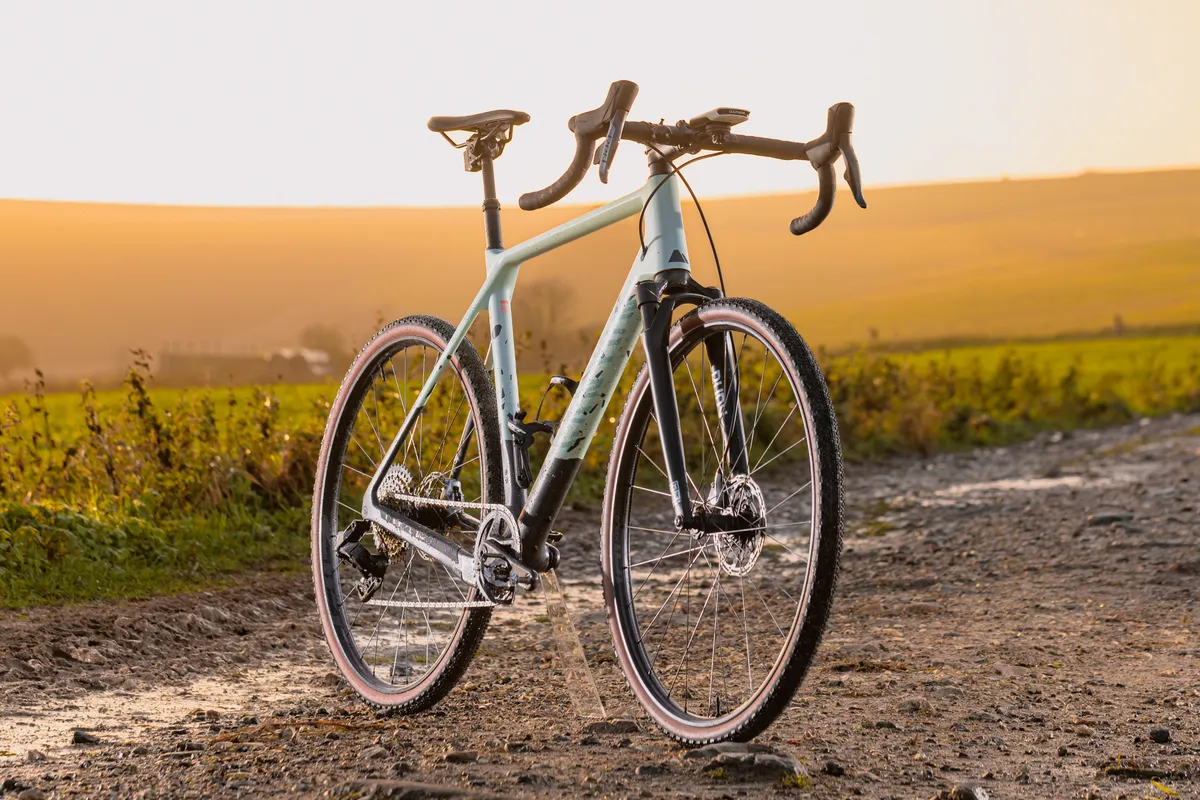
I was initially a little sceptical about where XPLR sat as a gravel-specific offering within SRAM’s range. However, in use it hits the gearing sweet spot for riders in search of a 1x gravel bike setup that provides a suitable spread for everyday, multi-terrain riding.
The 10-44t cassette provides a smooth progression between gears where you need it, as well as plenty of range for climbing, and this Red-level drivetrain provides the seamless shifting we’ve come to expect from SRAM’s eTap.
It’s a pricey configuration in this top-tier setup – most riders will find better value further down the range.
But, with second-tier Force and third-tier Rival options to choose from, SRAM has extended the benefits to more accessible prices, too.
Product
| Brand | sram |
| Price | 1610.00 EUR,1435.00 GBP,1610.00 USD |
| Weight | 1128.0000, GRAM () - Rear derailleur, crankset, cassette (claimed weight) |
| br_whatWeTested | SRAM Red eTAP AXS XPLR rear derailleur, SRAM Red eTap AXS XPLR 40t crankset, SRAM XPLR XG-1271 cassette |
Features
| br_crankOptions | 1x |
| br_speed | 12 |
| br_brakeType | hydraulic_disc |
| br_cassetteOptions | 10-44t |
| br_chainringOptions | 36t, 38t, 40t, 42t, 44t, 46t |
